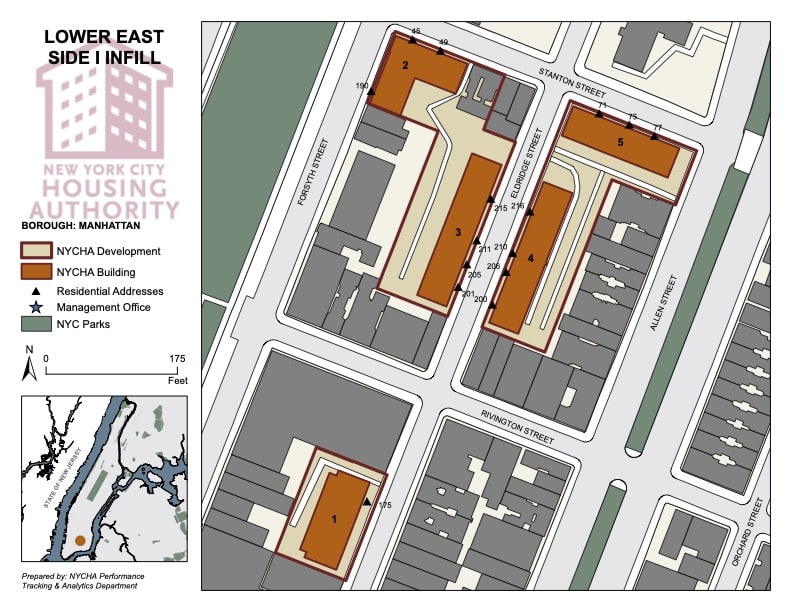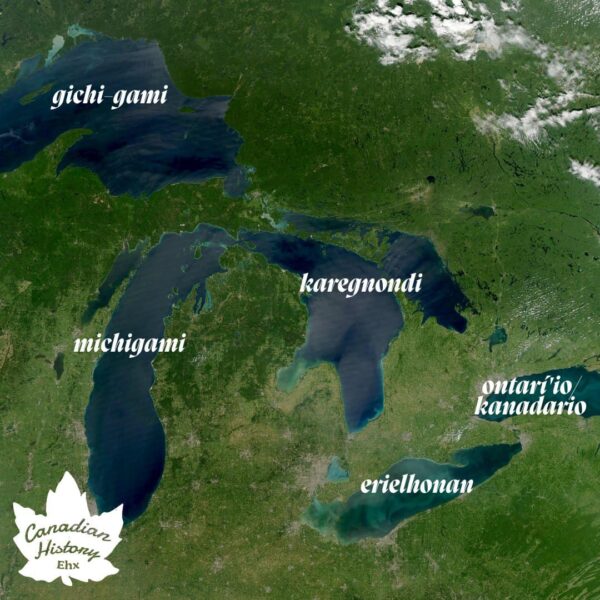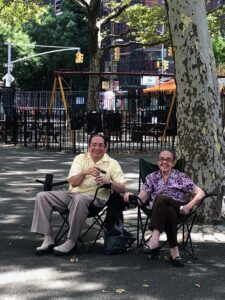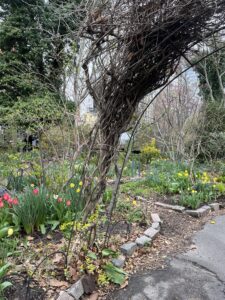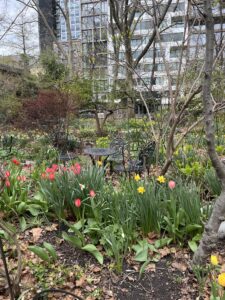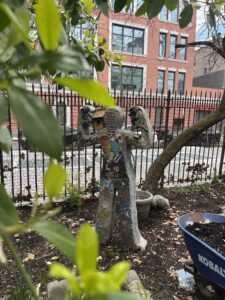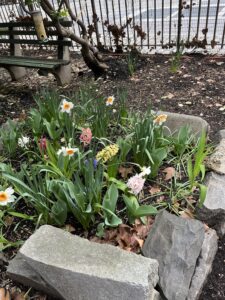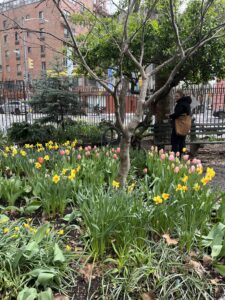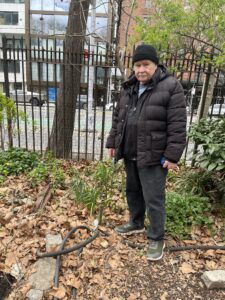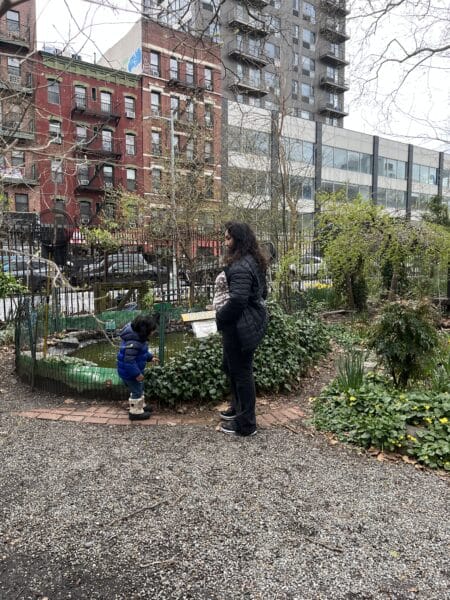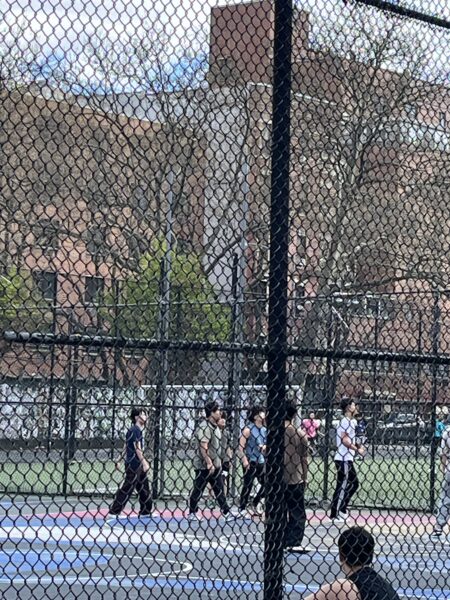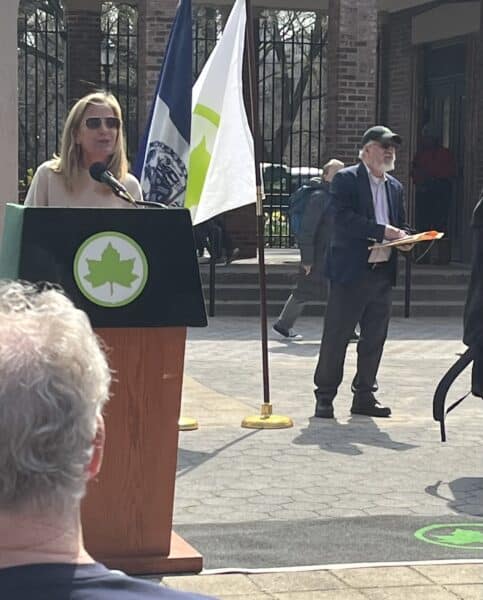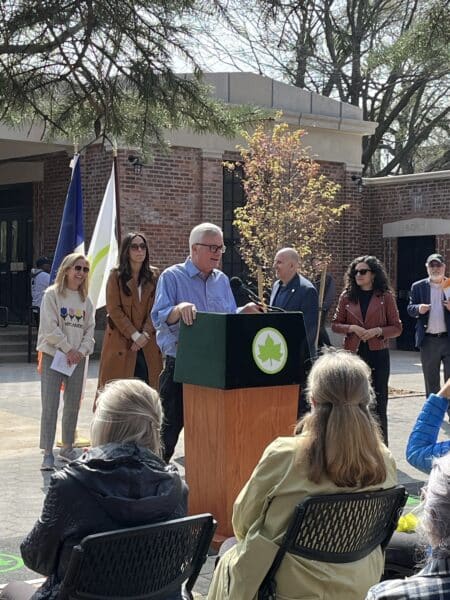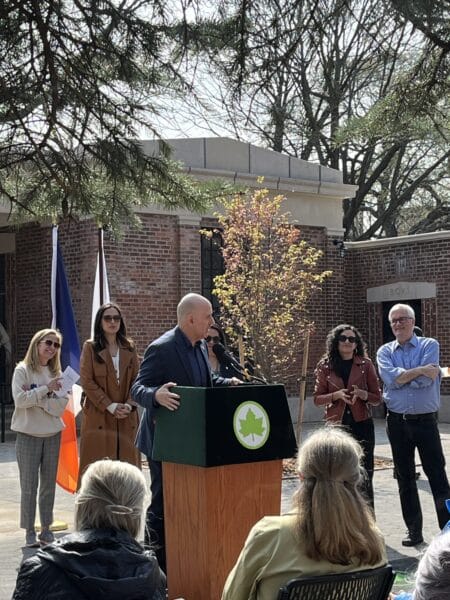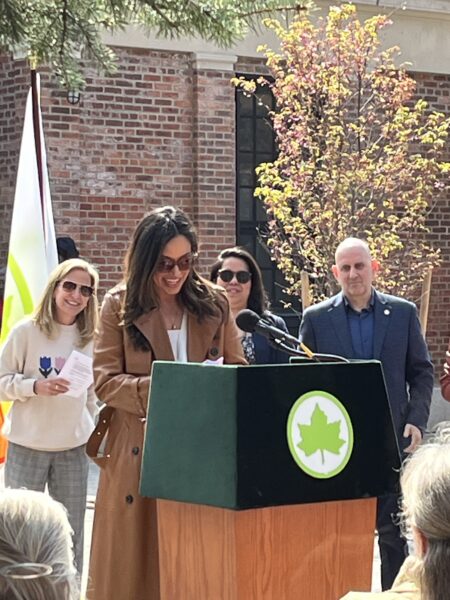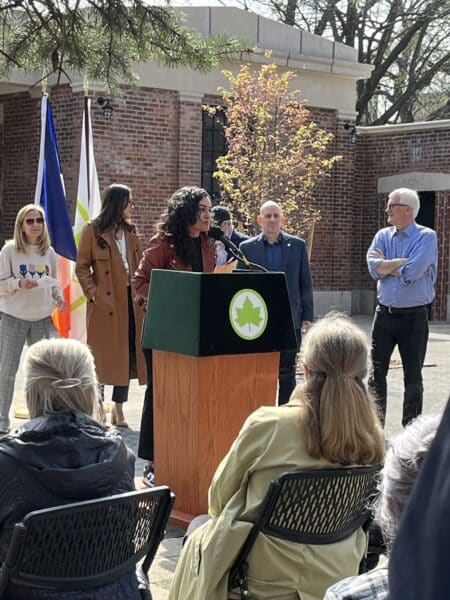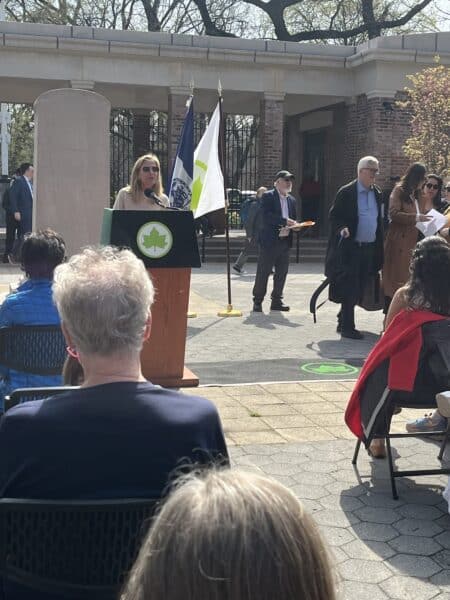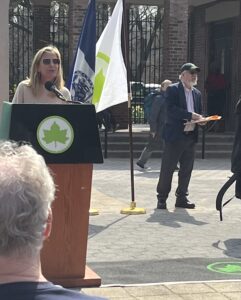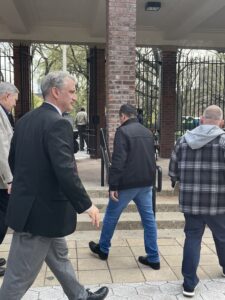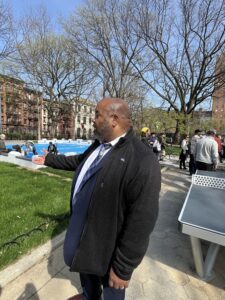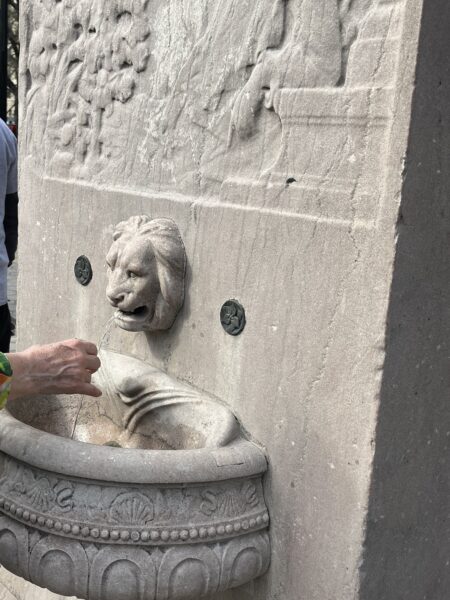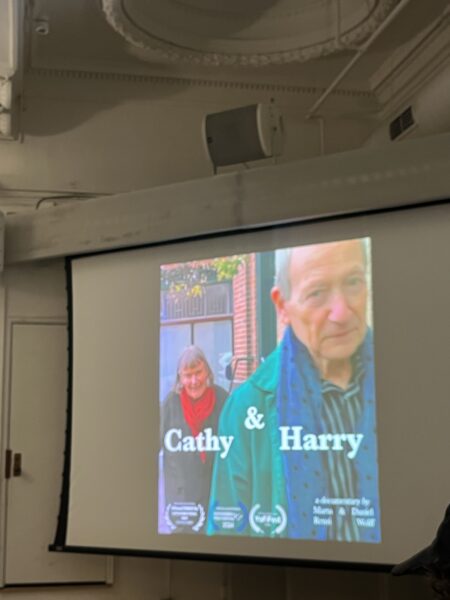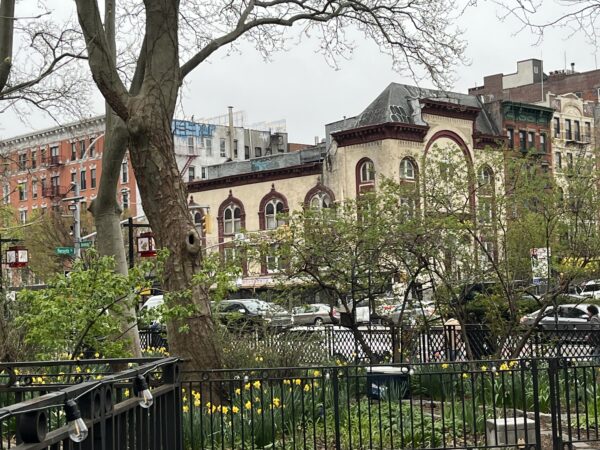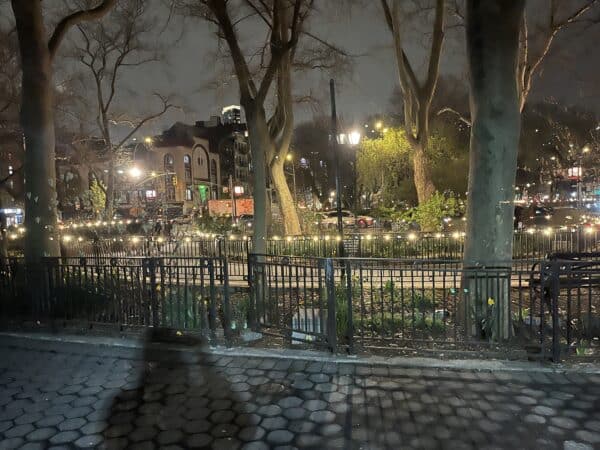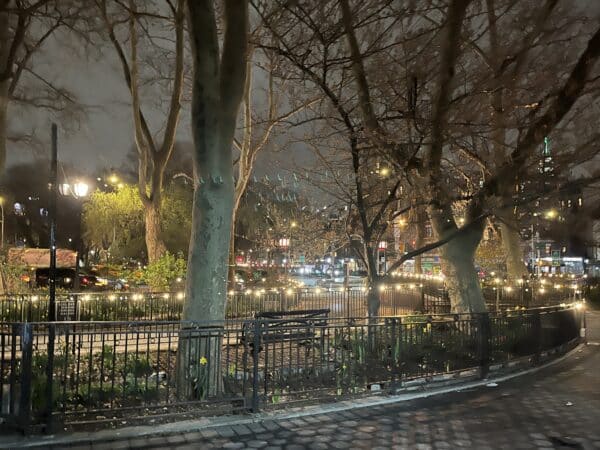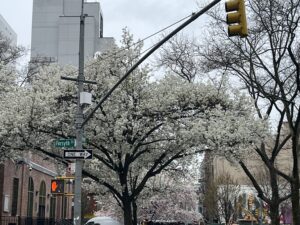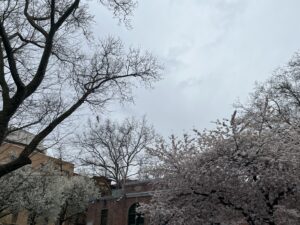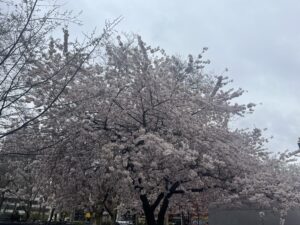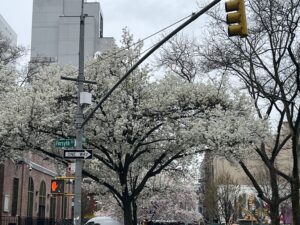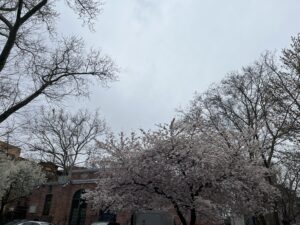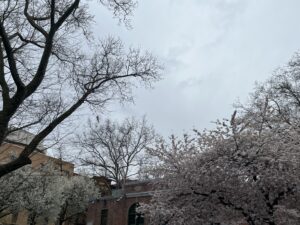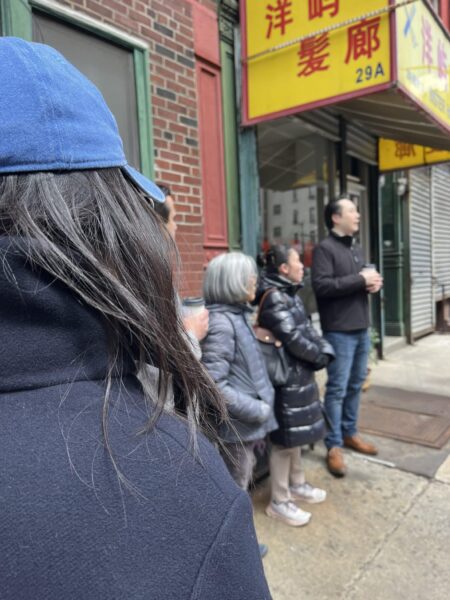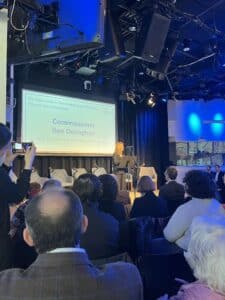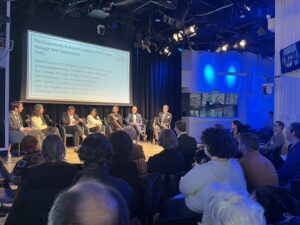The Original Indigenous Names for the Great Lakes
Superior: gichi-gami (great sea)
Erie: erielhonan (long tail)
Michigan: michigami (long body of water)
Ontario: Ontarí’io\kanadario (great lake\beautiful water)
Huron: karegnondi (fresh water sea)
The Senior Housing Crisis in NYC
Mayor Eric Adams:
I don’t know if you guys understand what’s going on right now.
There’s no housing, folks. There’s no housing.
Are you homeless? Do you have a home?
Who’s going to go to the 50,000 New York City residents that I have in homeless shelters walking around with FHEPS vouchers and don’t have a place to stay?
I will never commit to saying,
“I’m not going to build on every available piece of real estate I have to put NYC in a home.”
… I’m not going to give up on that.
I have a homeless crisis right now in this city, and it is a luxury to say, “Eric, don’t build housing somewhere.” That’s the luxury I don’t have. I got to get New Yorkers in housing.
They don’t have that luxury. I’m building housing wherever I can.”
Lack of affordable housing:
-Historic low vacancy at 1.41% for rental housing in NYC.
-Applications for affordable senior housing units are over 520,000 growing daily.
Homelessness
– 140,134 homeless New Yorkers in 2024 (170% children, 196% Families)
– the number of single adults ages 65 and older in the city’s main shelter system more than doubled from 2014 to 2022. Nearly 3 times as quickly as the number of younger single adults in shelters.
December: about 1,700 people older than 65 in single-adult shelters. The share of residents in those shelters who were 65+ increased (8% from 5%).
Elder Poverty
One in every four older adults in the Bronx is living in poverty (highest rate in NYS). The poverty rate for older adults Brooklyn (20.9%). Manhattan (16.3%). Staten Island increased by 63%. – AARP
Elder Finances
Many older New Yorkers live on fixed incomes and struggle to make ends meet. 65% of older New Yorkers surveyed live on less than $15,000 a year, and 32% don’t receive social security.
Older Women
Women over the age of 65 are 80% more likely than men to be impoverished.
Sources:
Ben Max Podcast City of Yes for Housing Opportunity’ Enters the Home Stretch, with Dan Garodnick
LiveOn NY How Long Do We Have to Wait?
NYTimes: Why More Older New Yorkers Are Ending Up in Homeless Shelters
AARP AARP NY on State of City: 36%+ Growth in NYC’s Older Adult Population Means More Must Be Done
NYState Comptroller DiNapoli New Yorkers in Need.
Walk in M’Finda Kalunga Garden This Weekend
Spot the Greenhouse, The Standing Strong Sculpture, Colleen and Jim!
Visiting the turtle pond (turtles returning as soon as it’s warm enough)
and nearby Nike field Basketball:
Newly Renovated Tompkins Square Park Fieldhouse Open!
Newly renovated Tompkins Square Park fieldhouse is open!
April 14th NYC Parks Commissioner Donoghue, Council Member Carlina Rivera, Senator Brian Kavanagh, Assembly Member Harvey Epstein, Manhattan Parks Commissioner Shimamura, CB3 Chair Gordillo, AND
Park Staff (Steve, Ralph, Jamil, Terese, and Luc) and many others held a ribbon cutting.
Park Staff Steve (background), Ralph, Jamil, Terese and Luc:
More Artists of Sara Roosevelt Park and Nearby: Cathy & Harry Film and Catherien
More Artists of Sara Roosevelt Park and Nearby: Steve Elson in Concert
Steve Elson’s new music in concert!
Sunday May 4th at 7:00 pm
FABnyc* 70 E 4th Street
Admission: $20*
Site is Accessible, Limited seating available
Email info@steveelson.com to hold your seat!
See you there!
More Spring Sara Roosevelt Park Photos
Daytime from the front of the BRC Senior Center
Evening from the front of the BRC Senior Center (FABnyc illumination project!)
AAFE’s Thomas Yu Gives a Walking History Tour of AAFE’s Beginnings
AAFE Has been a local Coalition Partner in this neighborhood for decades!
Community Services: Housing rights, social services, immigration, youth program
Small Business: Low-interest loans and services from Renaissance ED
Homeownership: Homeowner Counseling & Financing
Mayor Forum NY Law School with Ben Max and Center for an Urban Future Panel on the idea of Concessions as Funding Source for NYC Parks. A Few Concerns
Mayoral Forum on Parks
photo NY4Parks
We heard from candidates running for New York City Mayor ahead of the June primary election. 10 Democratic candidates have been invited based on their prominence, polling, and fundraising. Most are expected to participate.
Moderated by Ben Max, Program Director, NYLS Center for New York City and State Law, with questions directly from Play Fair Coalition members.
This forum is co-hosted by NYLS Center for New York City and State Law and New Yorkers for Parks, with partners from the Play Fair Coalition.
Recording available on Ben Max’s podcast: Mayoral Candidate Forum on Parks, Recreation, & Open Space HERE
On Expanding Concession in NYC’s Parks see Center for an Urban Future
We have a few concerns. Not the least of which is the only Parks groups that weighed in on this panel were Conservancies.
Any move that reads of more privatization of NYC Parks especially in this period is not entirely welcome.
We have a NYC Parks Department – happily would see it funded by funds generated by the Public’s Parks – DIRECTLY. Do we need to go through a non-public non -governmental entity in the midst of watching our government being dismantled?
See CUF recommendations below.
Council Member Shekar Krishnan Chair of NYC Council Parks Committee
Sue Donoghue NYC Parks Commissioner
Panel of Conservancies weigh in.
1. Launch 20 new destination-worthy concessions over the next three years. To realize more of the untapped opportunity to generate concessions revenue in parks, the mayor should launch a major new effort to create 20 destination concessions over the next three years—from new restaurants to year-round spas—that generate maintenance funding while enhancing the experience of parkgoers. A measured expansion of these offerings could help transform underutilized areas of parks into vibrant community hubs and generate as much as $10 million in recurring annual revenue. To jumpstart this effort, the mayor should direct NYC Parks to identify 20 high-potential sites across the five boroughs with community input, prioritize underutilized assets like pool houses and comfort stations for adaptive reuse, and issue RFPs aimed at attracting local entrepreneurs and innovative concessionaires.
2. Designate a trusted partner to capture a greater share of future concessions revenue to reinvest in parks—or amend the City Charter to enable Parks to capture revenue. To ensure that this revenue benefits parks, City Hall should work with NYC Parks to distribute dollars through a trusted nonprofit partner or multiple partners to address the agency’s maintenance and programming needs. The city could also consider creating a new Parks Maintenance Trust or other designated entity that would collect revenue from both new concessions and the renewal of existing license agreements, such as with the stadiums located on parkland. City Hall could also explore an amendment to the City Charter that would enable NYC Parks to hold onto a portion of its revenues over a set target—for instance, all concessions revenue over $50 million. The city could also pilot new efforts to create revenue-sharing agreements with smaller parks organizations including “Friends of” groups.
Importantly, the mayor and City Council should commit to maintaining city tax levy funding at or above a set baseline, so that new revenues are used to benefit parks, not close other budget gaps (this requirement could also be written into the bylaws of a new Parks Maintenance Trust). To ensure that the revenue benefits all parks with unmet maintenance needs, the city should consider an 80-20 revenue split—only for new concessions revenues in parks without existing conservancies—that keeps most of the proceeds in the host park while directing a portion to support green spaces in underserved neighborhoods. Once this system is operational, the City Council could pass legislation requiring NYC Parks to report on how revenue from the Parks Maintenance Trust or similar entity is being allocated.
3. Launch a new Concessions Investment Fund with NYCEDC to renovate and open new concessions in underutilized parks properties. Experts suggest that more than 20 parks properties could provide an opportune setting for a new concession in the future. The pool houses in Astoria Park and Jackie Robinson Park. An abandoned newsstand in Grand Army Plaza. Half-empty maintenance sheds in Sara D. Roosevelt Park and Alley Pond Park. The visitor center in Fort Greene Park. The dilapidated kiosk in Union Square. The bathhouse in Baruch Playground. The Tennis House in Prospect Park. The radio station building in WNYC Transmitter Park. And Worth Square, next to Madison Square Park.
Most of these sites, however, lack the capital investment needed to attract a private sector partner, such as electricity, plumbing, and HVAC—or even a stable structure. Inspired by the renovations of McCarren Parkhouse and the Orchard Beach Pavilion, NYC Parks should launch a new Concessions Investment Fund in partnership with NYCEDC, which could mobilize the upfront capital investment needed to attract private sector investment and help prepare underutilized or empty parks structures to become attractive, revenue-generating concessions.
The agencies could also consider the option of a low-interest revolving loan fund, providing concessionaires with a source of affordable capital and technical assistance focused on the unique needs and opportunities of parks properties. As an added benefit, if some of the capital work is managed directly by NYCEDC, the process is simplified and can often be accomplished much more quickly and affordably than if it flows through the city’s capital process.
4. Pilot a pop-up parks concession program to expand temporary, mobile, and seasonal opportunities citywide. In addition to creating new destination-worthy concessions, the city has a significant opportunity to develop more concessions that fill the gap between brick-and-mortar establishments and mobile pushcarts. To capture new revenues with lower costs of operation and easier deployment than a full RFP for an existing structure, City Hall should work with NYC Parks to pilot a pop-up concession program to reach more parks citywide. The city could also consider launching an RFP for an operator or coordinator of mobile concessions, coordinating with the hundreds of programs taking place in parks across the city to offer audiences options for food and drink while generating revenue for the host park.
There are examples elsewhere to follow. In Philadelphia, the “Parks on Tap” program sees a beer garden travel to a new park each week for 26 weeks straight from April to October, with a portion of sales going back to Philadelphia Parks & Recreation. In Chicago, the 7323 Café operates out of a storage container in Flying Squirrel Park. And locally, the Queens Night Market, although not technically on parkland, brings a destination-worthy event featuring local entrepreneurs to the edges of Flushing Meadows-Corona Park.
5. Reform citywide concessions guidelines to boost high-quality participation in parks concession RFPs. While much can be done to ensure that NYC Parks can both bolster concessions and hold onto a greater share of their revenue, it should be coupled with a concerted effort from City Hall to align processes around concession agreements to attract a stronger pool of bidders. For decades, too many RFPs have seen a limited response or gone unanswered. In addition, differing agreements among agencies can lead to unintentional competition between concessions located on parkland versus Department of Transportation property or other city-owned assets.
To address these obstacles, the mayor should work with all agencies that license concessions to develop a citywide approach to concessions agreement development and revenue-sharing—applying best practices across agencies, simplifying the process wherever possible, and aligning the terms that agencies offer to maximize concessions quality, feasibility, revenue, and benefits for New Yorkers.
Endnotes
1. These restaurants and cafes are located in city parks that are not managed by conservancies or other nonprofit partner organizations.
2. Center for an Urban Future analysis of data from the Mayor’s Office of Contract Services, 2023.
3. John Surico and Eli Dvorkin, Paying for NYC’s Growing Park Needs, Center for an Urban Future, January 2024, https://nycfuture.org/research/paying-for-nycs-growing-parks-needs
4. Center for an Urban Future analysis of data from the NYC Office of Management and Budget’s annual financial plans and from the NYC Council’s annual reports on the preliminary plan for the Department of Parks and Recreation.

